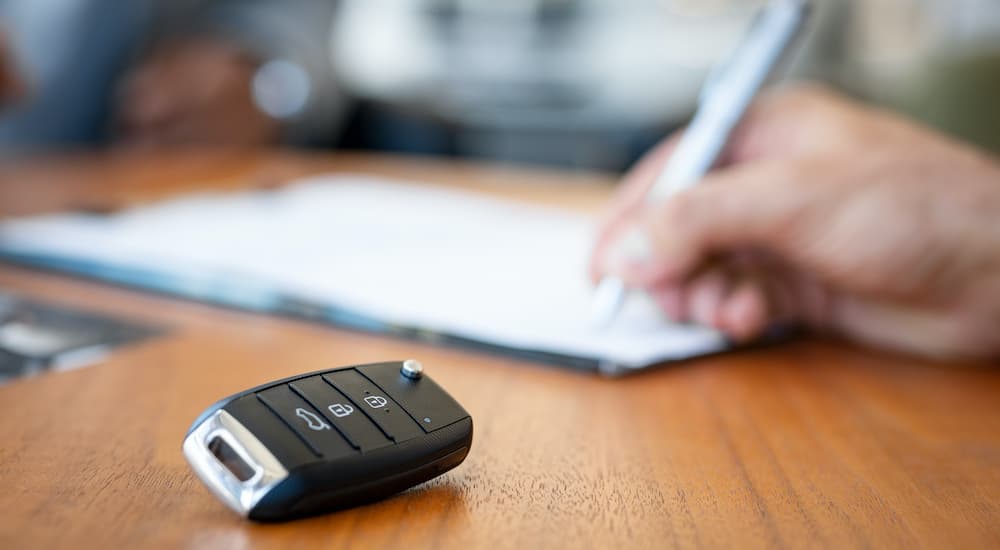If you’re searching for quality used cars for sale, you might be wondering how to get started. After all, your vehicle is likely the second most expensive purchase you’ll make next to your home. It makes sense, then, to formulate a plan of action before pulling the trigger. With proper planning and a well-thought-out series of steps, you’re far more likely to end up with the right car at the right price.
Buying a loaf of bread doesn’t require a lot of thought, and in fact, you might end up making a last-second decision, grabbing the sourdough instead of your normal multigrain. The consequences of making a bad bread buying decision are minimal. Not so with a used car that could cost hundreds of dollars every month. In other words, the cost of an item should dictate the amount of time and energy you put into research and planning.
Since buying a car is rather complex, we recommend breaking it down into a series of steps. The first step is research, followed by shopping for and selecting a vehicle, then securing financing. It’s a big task, but far easier when you follow a simple series of phases designed to funnel you down to the perfect vehicle for your lifestyle and budget.
Step One: Research
With literally thousands of vehicles to choose from, the research phase of your hunt should focus on paring down your options to a handful of serious contenders you can focus on and really get to know. Generally speaking, starting with a budget can help immediately narrow down your choices. Then, ask yourself what’s most important. Are you looking for cargo space or towing capability? Is the vehicle for just you, or do you have a family?
Knowing your estimated daily mileage is also helpful, especially if your goal is to find an economical commuter. You don’t want to waste your time test driving SUVs or full-size pickups when what you’re after is a small car that gets 30+ miles to the gallon. Additionally, you’ll want to decide what kind of comfort and convenience features are important to you. Knowing this ahead of time can be helpful for deciding whether you want a newer used car or something older and more affordable.
Speaking of older vehicles, it’s important to dig into warranty information, reliability ratings, and safety ratings. Sources like J.D. Power and the National Highway Traffic Safety Administration contain data on just about every vehicle ever manufactured, so you can ferret out the specifics on the one you want. Did it perform well in a crash test? Were there a lot of recalls? Knowing these details ahead of time can save you a lot of headaches later.
What you don’t want to do during this phase is waste your time scrolling through online classified sites looking at individual vehicles. You’re putting the cart before the horse and increasing the risk of an impulse purchase. Many used car buyers make the mistake of bargain hunting because they’re convinced that the perfect low mileage used car is just waiting for them in grandma’s garage. The fact is, these kinds of deals are extremely rare.
Step Two: Shopping and Choosing Your Vehicle
Once you’ve settled on the vehicle make and model or body style you want, it’s time to hit the pavement. We recommend always taking a test drive before deciding to purchase a vehicle. Ergonomics and cabin aesthetics are extremely personal, so if you buy without spending some time behind the wheel, you might end up with a seat that doesn’t feel quite right or dash controls that aren’t intuitive.
This is also the time for flexibility. If you have your heart set on a particular year, make, and model in a specific trim and with narrow mileage parameters, you might be waiting a while. Instead, we suggest picking your 100 percent perfect vehicle, then working backward and establishing broader parameters that you’ll find acceptable. Doing this allows you more freedom to select a dealership based on reputation rather than defaulting to an unknown just because they carry the vehicle you want.
This brings us to the most important decision in the shopping phase: dealer choice. If you decide to buy from a private seller or an unverified third party with questionable customer reviews, prepare yourself for potential headaches while you own your vehicle. Deceptive practices are still common in the used car market, especially if you’re buying on the low end of the price range. When in doubt, trust review sites to guide you in the right direction.
Once you’ve settled on a dealer you can trust (we really don’t recommend buying from a private seller), it’s time to settle in on a price and learn more about the facility. Ideally, you’ll have access to on-site service and maintenance, as well as an in-house finance team to help you secure a loan. Additionally, a bona fide dealer is equipped to take in trades, so getting the cost down by trading in your car adds up to more savings. That won’t happen in a private sale.
Step Three: Financing
You’ve found your dream vehicle, and you’re ready to move forward. Once you’ve settled on a fair price and any allowances for your trade, it’s time to lock in your financing. We can’t say it enough: partner with a dealer that has access to multiple financing options and that can work with your specific budget and financial situation. No two buyers are alike. Professional used car dealers understand this and provide a range of programs to address them.
This is especially critical if your credit isn’t stellar. We all go through tough financial times, and quite often, having a reliable vehicle is the best way to move forward. Unethical dealers prey on credit-challenged buyers, sticking them with incredibly high-interest rate loans or requiring unaffordable down payments to execute a contract. Unfortunately, these practices give used car dealers a bad name.
Reputable dealerships treat every customer with respect regardless of their budget or financial situation. In fact, you can find dealers that specialize in working with credit-challenged buyers. These facilities design programs that not only get buyers financed but also reward on-time payments and act as a financial partner to help improve scores and keep buyers from an upside-down ownership conundrum.
What does it mean to be upside-down in a car loan? It means you owe more than the vehicle is worth. It’s a crushing blow for cash-strapped buyers and a financial situation that can lead to more troubles down the road. Instead, struggling buyers should put their trust in dealers who understand their unique challenges and can lay out a comprehensive plan designed to keep them upright and net positive in-vehicle loan-to-value.
The Car Buying Journey Starts With You
There are so many other considerations when you embark on a used car purchase, including aftermarket insurance and warranties designed to protect you from expensive repairs. Buying a used car is a game of minimizing risk, so it pays to align with a professional dealer that’s equipped with the know-how to guide you through the entire process.
You don’t have to figure it out on your own, and the relief that comes from knowing you trust the shop you’re buying from is indescribable. Sure, do all the research and decide on the perfect car for you, but even more important, take time to locate a dealership staffed by pros who will treat you with respect and help you save money and end up with a reliable, safe used vehicle in your driveway.






